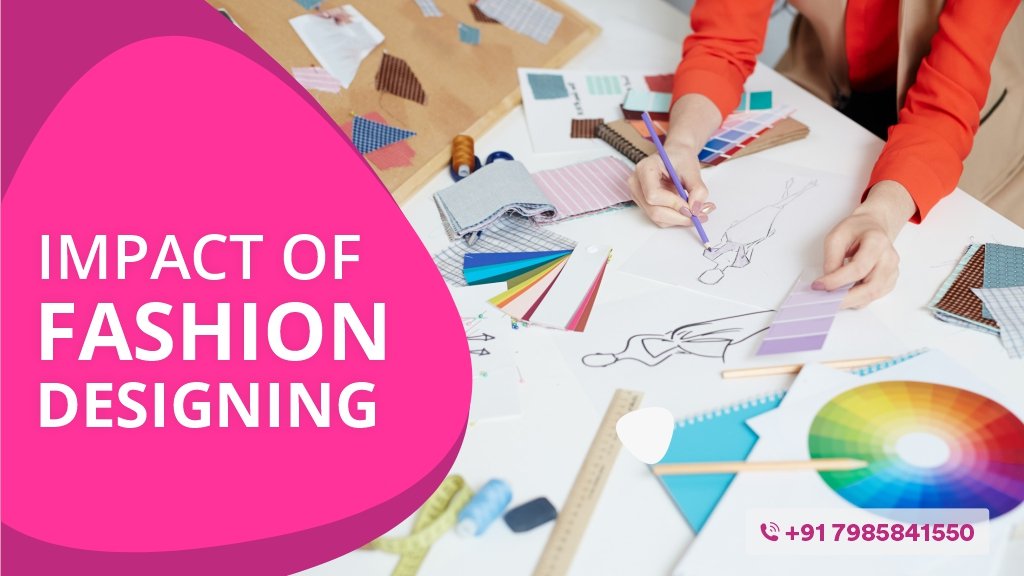Have you ever pondered what lies behind your clothes? Fashion designing is a combination of creativity, technical proficiency, and knowledge of the fashion industry. It goes beyond just making lovely clothes. In this blog, we will examine the world of fashion design and the numerous factors that contribute to its popularity as a fashion designing course after 12.
Creating garments and accessories that are not only aesthetically beautiful but also practical and comfortable to wear is the practice of fashion designing. To make a design come to life, various fabrics, colors, textures, and patterns are used. The ability to envision the finished product from the beginning and a great eye for detail are prerequisites for designers. There are some of the various institutions that provide fashion designing in Hazratganj.
Before diving more into the fashion designing courses in Lucknow, let us first understand what fashion designing is.
What is Fashion Designing?
The diverse art and profession of fashion design entails coming up with unique designs for apparel, accessories, and footwear. It is a field that is always changing, with fresh trends and fashions appearing each season. Research, concept development, pattern making, and garment construction are some of the processes in the fashion design process.
Finding inspiration from a variety of sources, including fashion history, art, nature, and current trends, is the first stage in fashion creation. Design concepts are created once a designer is certain of their inspiration and direction. To assist visualize the collection’s overall style and feel, this entails sketching concepts, experimenting with various fabrics and textures, and making a mood board.
The designer develops patterns that act as the construction manual for the garment when the design concepts are decided upon. In order to cut the cloth, this involves taking measurements and producing a paper or digital pattern. The designer chooses the right fabrics and starts the process of making the garments after the patterns are finished. The fashion designing training in lucknow includes various modules of these to provide the best fashion designing course.
Cutting the fabric in accordance with the pattern, followed by sewing the pieces together, creates the finished garment. To produce high-quality clothing, designers need to have good technical abilities in areas like pattern-making, stitching, and draping. The garment is then put on a model or mannequin once it is finished to check for fit and make any required modifications.
Designers need to have a solid awareness of the commercial side of the industry in addition to the creative and technical parts of the field. Understanding market trends, pricing tactics, and the manufacturing process are all part of this. Many fashion designers work for huge fashion houses or create their own lines.
Fashion designing industry is an interesting and dynamic sector that calls for a blend of technical proficiency, creativity, and financial savvy. It is a field that is constantly evolving, hence designers must keep up with the latest developments in order to provide effective and original ideas
The History of Fashion Designing
The history of fashion design is extensive and fascinating, going back many centuries. Human society has always placed a high value on clothing, and throughout history, people have utilized fashion to convey their social standing, identities, and personal tastes.
The development of fashion design courses in various parts of India may be traced back to the early twentieth century, when a few universities began offering courses in textiles and clothes. This period saw the development of fashion designing courses in lucknow and many more places.

The Impact of Fashion Designing on Society
The clothes the people in a society are wearing has a great impact on the society. It represents both personal style, self expression and environmental sustainability. Below we have listed some ways the fashion designing sector impacts the society we live in:
- Individualism: Fashion is a way of self expression of identity and personal style. The best fashion designing course includes modules to help students learn how to create new styles and trends that inspire people. This allows them to express themselves in unique and creative ways.
- Social standing: Throughout history, fashion has been used as a way to signal social status and wealth. Designer clothing and accessories are often associated with luxury and exclusivity, creating a sense of aspiration and desire among consumers.
- Financial Health: The fashion industry is a major contributor to the global economy, providing jobs and generating billions of dollars in revenue each year. The industry includes a wide range of professions, including designers, manufacturers, retailers, and marketing and advertising professionals.
- Sustainability: Fashion has a very large impact on environmental health. Starting from producing clothes and disposal, all of this process contributes to pollution and waste. It includes making clothes by recycling materials and reducing waste in the production process. Some examples of it can be Jute pants or using faux leather instead of a real one.
- Socio-Cultural Factors: One of the major factors the society is built on is its clothing. Over time, fashion has been used as a form of protest and political expression. This includes people using clothing to make a statement or challenge traditional norms.
- Body Positivity: The Fashion industry has a great impact on body image. As for the major time period, the industry has been promoting unrealistic and unhealthy beauty standards throughout the globe. However, many designers have stepped forward to promote body positivity and inclusivity in the industry, creating designs that kill insecurities and serves a larger and inclusive audience.
Conclusion:
To summarize, fashion design is a rapidly evolving and innovative industry with a large impact on society and culture. It gives people the freedom to express their individuality through their personal style and dress while also reflecting and influencing bigger social and cultural trends.
A variety of elements, such as technological developments, economic forces, and cultural movements, have influenced fashion design throughout history. The fashion industry has expanded to include a wide variety of styles and subcultures after transitioning from the exclusive world of haute couture to the more approachable world of ready-to-wear clothes.
Fashion designers and activists can use clothing and accessories to make a statement or challenge cultural standards, which has the potential to have a significant impact on societal norms. Fashion has served as a platform for political protest and expression, expressing the ideals and perspectives of a specific era or social group.
Designers and businesses will need to think carefully about how their work will affect society and the environment as the industry develops. The fashion industry may support positive social and cultural development while also encouraging creativity and self-expression by developing more sustainable and inclusive fashion.

